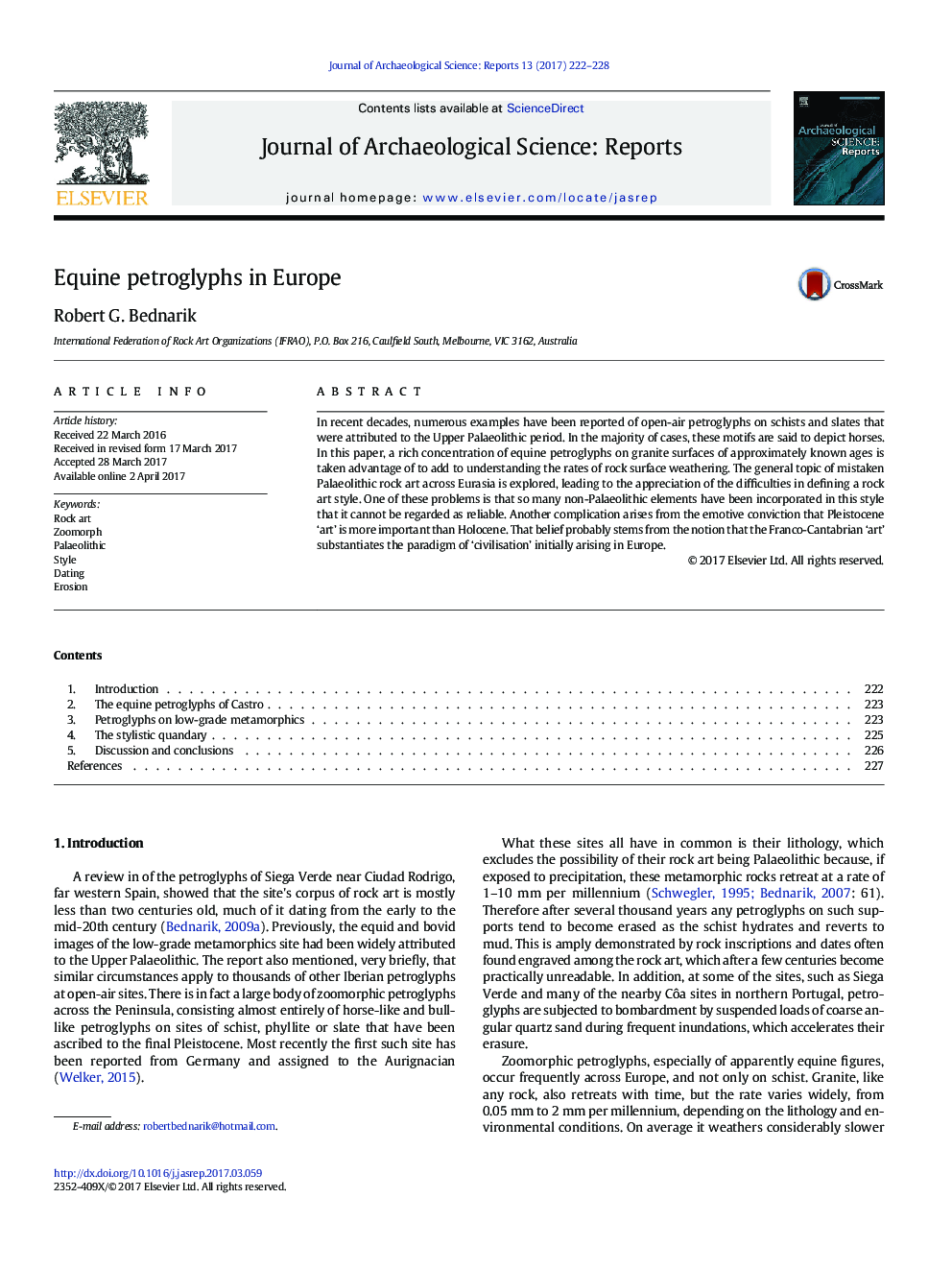| Article ID | Journal | Published Year | Pages | File Type |
|---|---|---|---|---|
| 5112455 | Journal of Archaeological Science: Reports | 2017 | 7 Pages |
Abstract
In recent decades, numerous examples have been reported of open-air petroglyphs on schists and slates that were attributed to the Upper Palaeolithic period. In the majority of cases, these motifs are said to depict horses. In this paper, a rich concentration of equine petroglyphs on granite surfaces of approximately known ages is taken advantage of to add to understanding the rates of rock surface weathering. The general topic of mistaken Palaeolithic rock art across Eurasia is explored, leading to the appreciation of the difficulties in defining a rock art style. One of these problems is that so many non-Palaeolithic elements have been incorporated in this style that it cannot be regarded as reliable. Another complication arises from the emotive conviction that Pleistocene 'art' is more important than Holocene. That belief probably stems from the notion that the Franco-Cantabrian 'art' substantiates the paradigm of 'civilisation' initially arising in Europe.
Related Topics
Social Sciences and Humanities
Arts and Humanities
History
Authors
Robert G. Bednarik,
